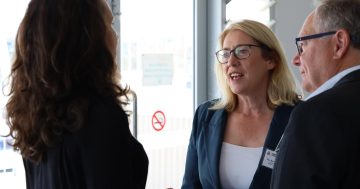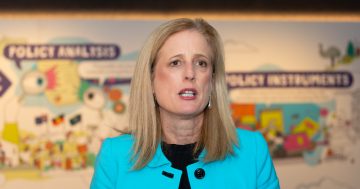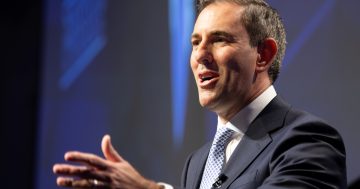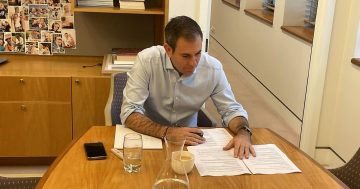On the 30th anniversary of the super guarantee, journalist and author Christine St Anne* revisits the birth of compulsory super and those who were there at the very beginning that helped create the $3.5 trillion industry Australia has today.
 Swept into power in 1983, the Treasurer of the Hawke government, Paul Keating understood the need for a retirement policy to “complement the aged pension”.
Swept into power in 1983, the Treasurer of the Hawke government, Paul Keating understood the need for a retirement policy to “complement the aged pension”.
For Keating, this system was superannuation – where employers contributed a portion of their wage into a superannuation fund.
At that time, super assets were $32 billion, with 39 per cent of workers covered by super.
By then, an occupational superannuation had already been embedded through parts of the workforce, starting with a union push way back in 1953 with the Waterside Workers Federation now the Maritime Union of Australia.
Under the leadership of Pat Geraghty, the union believed that superannuation should be extended beyond white collar and public servants.
Twenty years later, the Seafarer’s Retirement Fund (SRF) was set up which became Maritime Super in 2009.
It was the Federated Storemen & Packers Union’s (FSPU) super campaign in the skin and hide industry in the late 1970s which laid the foundations for the first formal offer for superannuation payments by employers – this eventually led to the establishment of the Labour Union Cooperative Fund (LUCRF).
The union then was led by Bill Landeryou and union officials Bill Kelty and Simon Crean both went on to steer the Australian Council of Trade Unions (ACTU).
Union organiser at the time, Greg Sword – who later became CEO of LUCRF – recalls the obnoxious smells he confronted as he carried the union’s super message to its workers in the sheds.
Like its peers in the waterfront, the union saw the benefits of super in helping their workers with a secure retirement.
“We held a broader view for a union that did not just want to focus on the day-to-day wage claims. We wanted to change the world,” Sword said.
The emergence of the Accord
Fast forward to 1980s and the drive towards occupational superannuation picked up in a 1984 campaign led by the ACTU.
This was done through the Accord – an agreement between the unions and Labor government to restrain wage growth in order to control inflation.
Under the Accord Mark Two, superannuation was identified as a key issue and by December 1985, superannuation was further formalised under Keating when the Treasurer developed guidelines for occupational superannuation.
Superannuation increases beyond 3 per cent would be limited under the guidelines and vested benefits would have to be preserved until age 55.
While an adequate retirement policy that served all Australians underpinned the super push by the Hawke Government and ACTU, both saw the benefits of tackling inflation by converting some wage increases into superannuation.
By the end of 1990, 64 per cent of the workforce had superannuation and super assets totalled $123 billion.
Protecting those not covered by awards
When the Keating became Prime Minister in 1993, a push to legislate for superannuation began.
The idea was discussed over a meal in an Indian restaurant near the ACTU offices in Melbourne with Keating, Kelty and Assistant Secretary Iain Ross.
Ross later became a Supreme Court judge and is now President of the Fair Work Commission.
They believed legislating for superannuation was critical to ensuring its survival.
While the union movement achieved success in pushing superannuation in award agreements, a “superannuation guarantee” (SG) would mop up the whole workforce by covering people who were not protected by awards.
On 1 July 1992, the SG finally came into effect.
Super assets totalled $148 billion, and the SG now covered 72 per cent of workers.
For businesses with a turnover of less than $1 million, 3 per cent would need to be paid to employees in 1992-93.
Larger businesses had to pay 4 per cent of salaries in the first six months of the financial year, rising to 5 per cent in the remaining six months.
By 2000, 9 per cent of SG would be phased, aimed to minimise the cost to business by moving to 9 per cent over a 10-year period.
The industrial push for super drove the establishment of industry superannuation funds.
Former unionists Garry Weaven (who later became a banker, then super executive) and Tom McDonald (now deceased) together with Kelty and Crean, helped build the foundations of industry superannuation funds, starting with the building industry.
The view that the model for a superannuation fund should resemble a good Holden rather than a Rolls Royce, according to former Cbus chief executive and later chair, Mavis Robertson (now deceased), the first influential female in the emerging superannuation industry.
The new super models
What underpinned this Holden-style model was a representative trustee approach – an equal number of union and employer representation on the boards – and more importantly the adoption of defined contribution, inherent in the LUCRF model.
The accumulation model was key, particularly during the global financial crisis where defined benefit funds in other parts of the world – notably the United States had collapsed.
Other features included portability, immediate membership of a superannuation fund upon employment, low employee contributions and full vesting rights.
Full vesting rights meant members of superannuation funds had access to what they contributed to their superannuation funds.
Robertson recalled “LUCRF helped us with the ideas for a model of a superannuation fund”.
It was a model inspired by the framework in the Northern European countries.
“We recognised that this industrial partnership in Australia can be very powerful in taking people’s benefits forward,” Sword said.
“We also felt that because unions originally did not have a say in superannuation, it would be hypocritical of us to lock businesses out of [occupational] superannuation.”
Employers were also crucial in the success of super.
Barry Watchhorn and John Hope both from the Australian Chamber of Manufacturers were in lock step with the unions on the push for super and helped set up the Australian Retirement Fund (ARF).
Eventually through a merger with the Superannuation Trust of Australia, the fund is now the $261 billion AustralianSuper.
CEOs of those early superannuation funds also helped steer their growth such as Ian Silk’s appointment to ARF in 1994.
However, according to Robertson, men, notably from the union thought superannuation was still a cottage industry, given its infancy.
These early opportunities were grabbed by a number of women who ended up steering the industry superannuation funds.
Women on top
Melbourne-born Anne-Marie Darke (now Corboy) headed up health superannuation fund HESTA.
Former union official Elana Rubin was one of the original trustees of ARF who later became the fund’s executive director of investments and is now AustralianSuper chair.
Ann Byrne led the Superannuation Trust of Australia and subsequently went on to lead UniSuper
There was also recognition that professionalism and industry representation were needed as part of the growth of the nascent sector.
Fiona Reynolds joined the superannuation industry in 1994 in her early-20s to co-ordinate the Conference of Major Super Funds (CMSF) formed in 1990 that gave a voice to not-for profit funds and emerged as a key educational forum for trustees and fund staff.
Reynolds then went on to chair the Australian Institute of Superannuation Trustees in 2006 for seven years.
Conservative politicians like David Connolly (became chair of Rice Warner) also ensured the survival of the SG when the Howard Government took power in 1996 Connolly argued with Howard that the increase from 3 to 9 per cent was critical if the population was to achieve self-sufficiency and have less reliance on the government’s age pension.
Connolly said that while the Liberal party was always big on the principle of self-sufficiency, there was not much of an argument when looking at the current state of play in Australia’s superannuation system.
“We had moved from an old system that covered only a small portion of people who were really the rich,” Connolly said.
“Once you marshalled your arguments, it was a bit hard to argue against a system that would increase national savings and give people independent retirement savings that were separate from the pension,” he continued.
SG’s slow burn to growth
Howard eventually succumbed to the argument while, according to Connolly, it did not take much to convince the then Federal Treasurer at the time Peter Costello.
For Costello (who is now chair of Nine) it was never an issue.
He never had a problem with these arguments as he could see the logic of it,” Connolly said.
“I would have gone to 10 per cent because it was a nice round figure, but I could only manage to talk Howard to committing to 9 per cent.”
The SG did eventually grow to 9.5 per cent in 2014 but for Keating, it was a missed opportunity to “jam” the SG at 9 per cent.
Instead of redirecting Australia’s subsequent growth boom into national savings via retirement accounts, Keating believed Howard squandered the nation’s fortunes on tax cuts and “building bridges to nowhere”.
Eventually an increase in the SG rate to 12 per cent was proposed under the Rudd government in 2007 – controversially linked to the super profits mining tax with the increase subsequently delayed.
Finally, a Coalition government under Scott Morrison committed to a 12 per cent increase.
Today the SG stands at 10.5 per cent – with plans to rise to 12 per cent by 2025 with the industry now managing $3.5 trillion of Australia’s retirement savings.
As a reporter of the superannuation industry for over 10 years, what impressed me was getting the leadership and buy-in from people to commit to a mandated scheme.
Kelty believed we owe the first 3 per cent of the SG to Keating, “but for me, just impressive was our commitment to forgoing part of our money to a retirement fund. This was also done in a time of significant reform.”
Indeed, Kelty also credits the Australian people for accepting the “wisdom” that came from that leadership.
“We had already asked them to make concessions that would ensure Medicare worked and now we were asking them to step up again and make a concession for their own future and the future of Australia.
“The Australian people were remarkable in the degree of support they gave.
“We hardly heard a murmur about Medicare.
“We hardly heard a murmur about national superannuation.
“We all recognised the importance at that time”.
*Christine St Anne is the author of A Super History.
This article first appeared at investmentmagazine.com.au.











